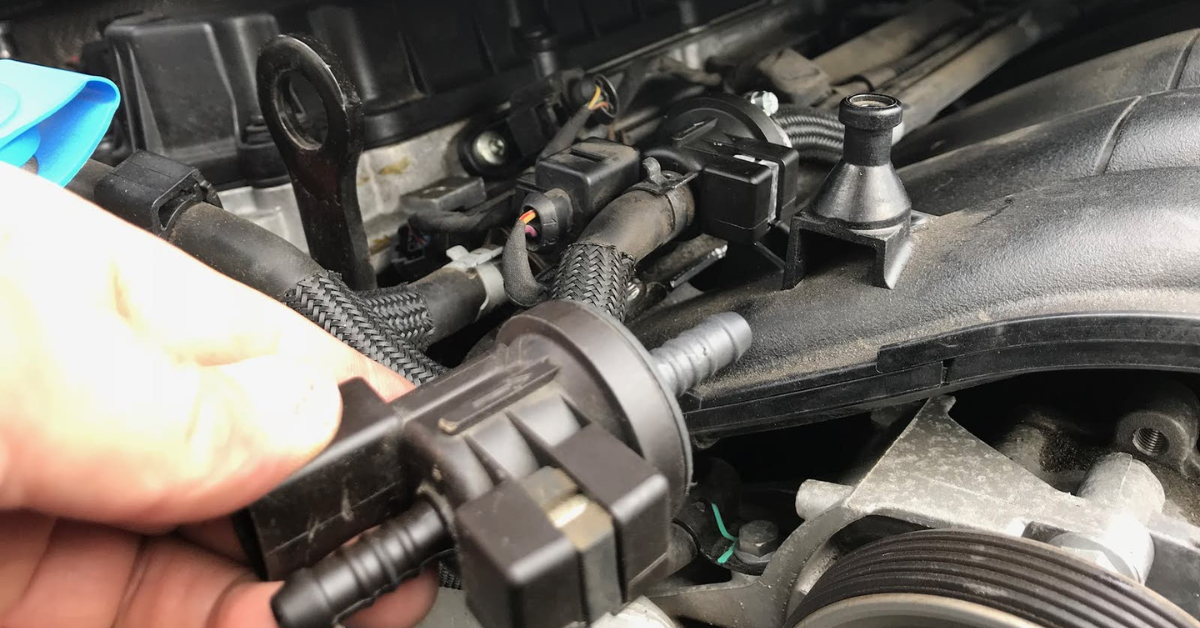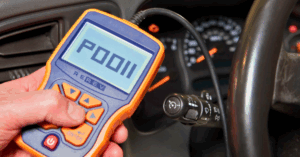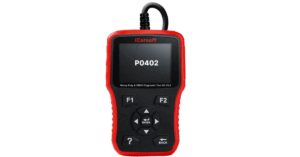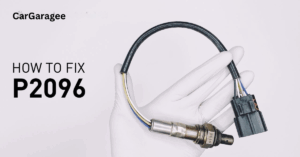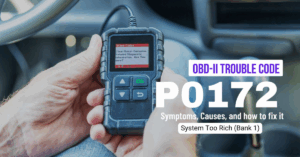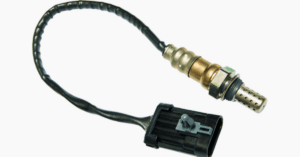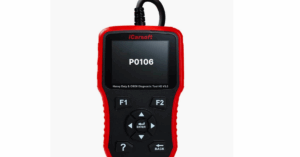P0442 Code—three digits that can turn a regular drive into a stressful one. During my lifetime of driving, I’ve faced my share of vehicle troubles—worn brake pads, a bent axle, even an AC unit that gave off an unpleasant smell. But no issue felt as urgent as one with the engine, the heart of the car. Even a minor fault can snowball into severe problems, needing a substantial investment just to fix them.
When that dreaded check engine light came on the dashboard, my OBD-II diagnostic scanner registered a P0442 EVAP leak detected trouble code. This code typically indicates a problem in the Evaporative Emission Control System, which is responsible for controlling fuel vapor release from the fuel tank. A small leak in this system may seem minor, but it should never be ignored—it could mean something is seriously wrong with your ride.
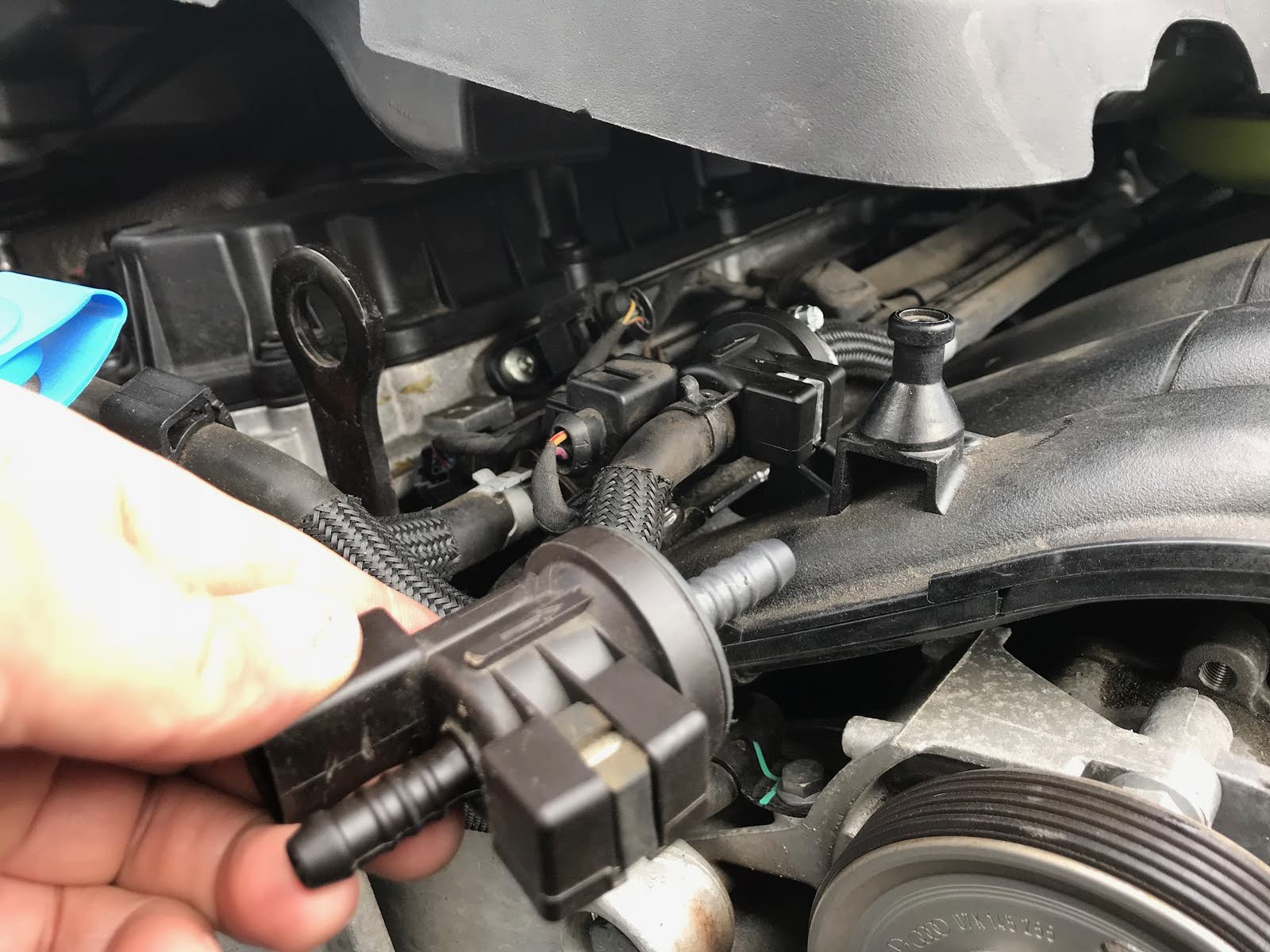
What Does P0442 Code Mean?
When I first saw the check engine light, my OBD-II code scanner showed P0442 code, a Diagnostic Trouble Code (DTC) linked to the evaporative emission control system (EVAP). It meant there was a small leakage—just 0.5–1.0 mm—in the fuel system, letting gasoline vapors escape into the atmosphere. Though not a critical problem, it was annoying and could become serious if not addressed.
The engine control module (ECM) or PCM monitors the EVAP system through periodic tests and a self-test after the car is refueled, parked, or left overnight. A P0442 Code can be triggered by leaks caused by something as simple as a loose gas cap, or more complex issues like a faulty canister purge valve or damaged vapor lines—especially during a MAP sensor or engine intake pressure check. I even noticed a faint buzzing sound, which turned out to be part of the self-check process that often precedes the P0442 Code detection. At the repair shop, the mechanic mentioned the diagnostic check-up would cost about $75–150 in labor.
The EVAP system works by trapping fuel vapor in a charcoal canister and sending it to the intake manifold to burn during combustion. The engine control unit (ECU) checks the valves’ tightness and system pressure, and it detects leaks as small as 0.2–0.4 inches. These EVAP problems, such as P0440 to P0457, need accurate interpretation to diagnose the fault properly. Depending on the size of the leak, some vehicles may show P0455 or P0456 instead, especially if the fuel tank, purge valve, or vent valve is compromised.
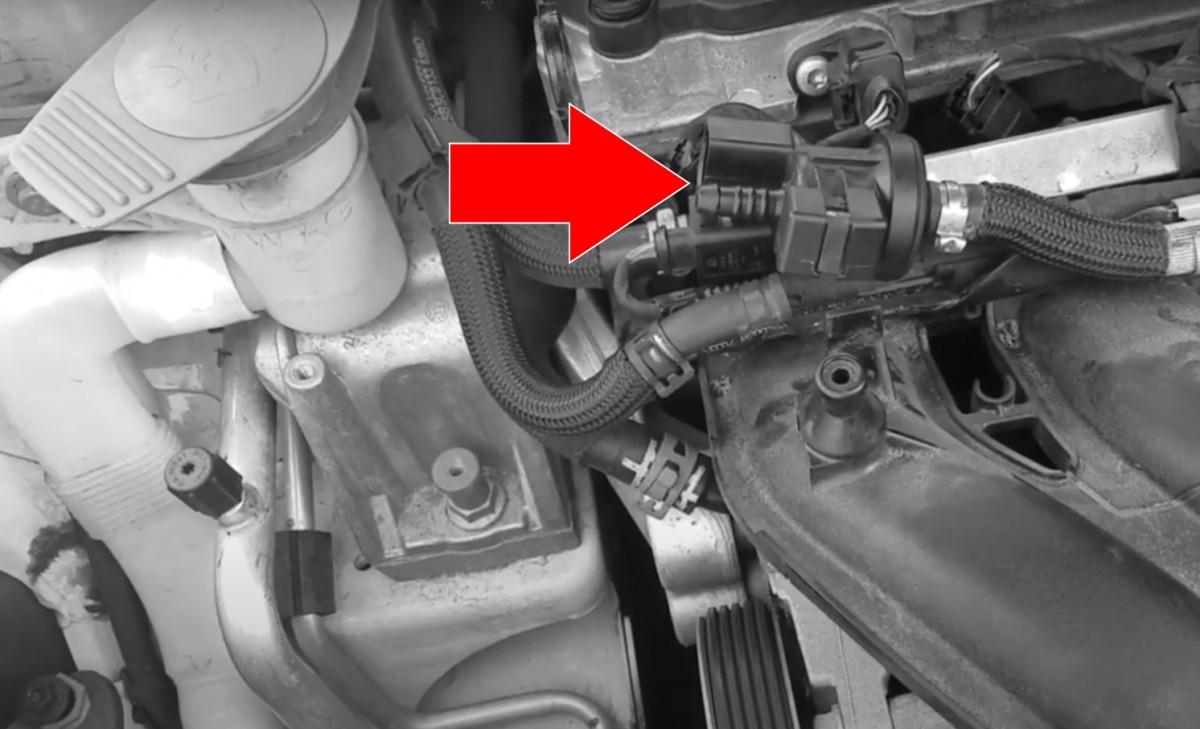
This is illustrated in the following table:
| Error Code | Description | Leak Size |
| P0456 | EVAP System Leak Detected (Very Small Leak) | < 0.020 in. |
| P0442 | EVAP System Leak Detected (Small Leak) | 0.020 to 0.040 in. |
| P0455 | EVAP System Leak Detected (Large Leak) | > 0.040 in. |
Uncovering the Hidden Triggers Behind P0442 Code
When I first faced P0442 Code , I found a light fuel odor and a warning from the EVAP system. It turned out my cap was slightly loose, letting fuel vapors escape—a common problem that can trigger this fault. Over time, even small holes, cracks, or cuts in hoses, tubes, or seals may lead to a leak, allowing vapors to leak without visible signs.
Later, I discovered other issues:
- A broken or worn fuel cap is the most common cause.
- A faulty purge valve or vent valve disrupts flow and causes leakage.
- A damaged EVAP canister or component can leak at the module connection.
- The leak detection pump may incorrectly read a leak due to sensor or pressure sensor errors.
- Hidden issues between the canister to fuel tank or purge valve to canister lines can escape standard self-test routines, making detection difficult.
What Are the Symptoms of P0442 Code?

When I first saw the check engine light turn on, I didn’t notice a drop in performance, but something felt off with the car. A mild fuel smell near the gas cap was the first common sign I noticed. Over time, the smell got stronger, and a slightly reduced fuel economy started to arise.
The activated engine light later led to a failed emissions test, confirming the P0442 code fault. Though it didn’t affect drivability, I noticed low idle, a rough idle, and signs of a vacuum leak. These symptoms may seem minor, but when reported, they point clearly to a leak affecting fuel economy and vacuum pressure.
What surprised me most was how noticeable the symptoms became over time, even without major drive-ability concerns. The decrease in fuel economy, occasional stalling at idle, and that persistent engine light made it clear the code wasn’t just a glitch. If your car shows these subtle hints, don’t ignore them—these small issues often lead to bigger leaks and tougher problems down the road.
How Serious Is P0442 Code?
When I first saw the P0442 code trouble pop up, I wasn’t too worried—it didn’t affect my vehicle’s performance at all. The issue is relatively minor and usually not critical, but it still needs attention. That’s because fuel vapors are releasing into the atmosphere, which increases air pollution.
Even though fixing it is usually inexpensive, ignoring it isn’t smart. The vapors might seem harmless, but they can still affect the environment over time. It’s not a serious threat to your car, but it does harm the air, so get it looked at soon.
Is It Safe to Drive with P0442 Code?
When the P0442 fault code first appeared on my vehicle, I kept driving because it didn’t affect how the system ran. But the check engine light stayed persistent, and I realized this issue could pollute the environment through fuel vapors. The EVAP system is designed to reduce hydrocarbon emissions, and a leak prevents that.
Continued operation may not harm the engine directly, but it can lead to environmental damage and air quality loss. Exposure to vapors can cause headaches, breathing difficulties, and even intoxication or long-term respiratory problems. That’s why I recommend getting the fault repaired soon—it’s the wise thing to do before you’re driving causes more damage or a failed emissions test/inspection.
How To Fix a P0442 Error Code on Your Vehicle
When my vehicle showed the P0442 code, I didn’t panic—but I knew I had to act quickly. I grabbed my OBD-II scanner to scan for trouble codes and any related codes that might help me diagnose the problem more accurately. In most cases, this kind of issue is tied to the EVAP system, and I even spotted P0440 and P0456, which pointed to smaller leaks and general malfunctions.
To troubleshoot the fault, I followed these steps:
- Used a scan tool to read stored DTCs in the onboard diagnostic system.
Checked the gas cap—sometimes damaged or loose ones are the root of the issue.
- Inspected the purge valve, vent valve, and nearby components for signs of damage or disconnection in the flow path.
- When I saw the P0443 code, I knew there was an electrical issue with the purge control valve circuit.
- Monitored for pressure-related codes (P0450–P0454) that led me to a weak EVAP pressure sensor affecting system performance.
After the full system scan, I saw a P0442 code pointing to the vent control, and it all started to make sense. I realized that while I could get a free scan at a parts store, deeper testing required more. I decided to purchase my own scanner, but automotive shops can perform these tests for about $50–$150, which might be worth it for complete repairs.
Note: When my vehicle first showed the P0442 code error, I also found P0441 stored in the system. It’s smart to inspect any related DTCs or codes first, since these other issues may be the real cause. If those codes are present, they could have set the P0442 code in the vehicle.
EVAP System Inspection
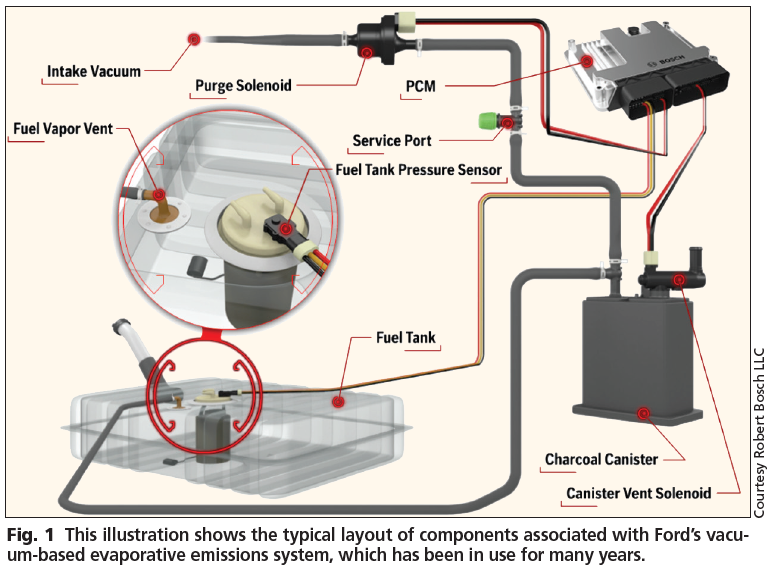
When I had the P0442 code fault, tracing the leak in the EVAP system turned out to be more challenging than I expected. Fuel vapor leaks are often minuscule and can’t be seen with the naked eye, so I visited local shops that utilize a smoke machine with special oil. This creates visible smoke, making visual inspections easier as the smoke flows through each vapor line, component, and connection shown on the system diagram.
I learned that the systems are generally simple once you follow the diagram, and a smoke machine can trigger accurate results. By checking each associated part one by one, it became clear where the weak spot was. If you’re working on this yourself, a smoke machine is a worthy tool to create the right environment for proper inspection.
Gas Cap Inspection
When I first saw the P0442 code on my vehicle, the first thing I did was check the fuel cap. A gas cap that’s loose, has cracks, or even small cracks can cause a vapor leak, which often becomes the cause of the issue. A quick inspection and tightening can sometimes be all it takes to have it remedied.
Since replacing a cap is cheap, I decided to try that before moving on to additional diagnostics. Many diagnostics I’ve seen perform deeper tests, but starting with the cap is the smartest first step. It’s also a relatively easy and affordable fix that can save you both time and money.
Note: Not all vehicles are equipped with a fuel cap, so if yours doesn’t have one, the P0442 code may be related to other EVAP components instead.
Fuel Filler Neck Inspection
When I noticed a vapor leak near the filler neck, I decided to do a full inspection of the area. Over time, it had become corroded, and rust was clearly showing signs of causing trouble. I had to carefully remove the corrosion using a wire brush, Scotch-Brite, and light-grit sandpaper to clear the surface.
This kind of fuel issue often leads to leaks, and it’s important not to overlook the filler neck during your checks. If it shows damage, it could be the main cause of the vapor leak. Even small damage in this area can escalate quickly and compromise your system’s performance.
Note: A P0442 code fault may be caused by a leaking fuel tank, purge valve, vent valve, or charcoal canister. If you notice a fuel odor, fuel leakage, or torn vapor hoses, these visible leaks are a safety risk and must be repaired immediately. Some components need special tests using power computer diagnostic tools, which can be costly, so an automotive repair shop may need to perform an EVAP diagnostic test if the fault is still present.
How Much Does It Cost to Fix?
When I had the P0442 code fault, I checked the All-Data estimator to understand the repair cost. For a Toyota Camry, replacing the charcoal canister was listed at over $1,000, not including diagnostic time. A fuel cap is cheaper—between $35 and $50 on average price—so I started with quick checks there.
For a Honda Accord, a fuel tank can cost around $1,200, while a fuel filler neck on an F-150 runs about $600 for replacement. The repair shop told me the final cost depends on individual circumstances and the parts you need to replace. Based on commonly reported fixes, I’d advise starting small, then move up if the issue isn’t resolved—it really varies.
Clear the P0442 Code and Test Drive
After using an OBD2 reader to clear the trouble codes, I took my car for a test drive. I wanted to drive it for a full day and then scan it again to check if the same problem occurs. If the code reappears, it’s not a one-time occurrence, but an ongoing failure that requires further investigation to fix.
Check the Gas Cap and Seals
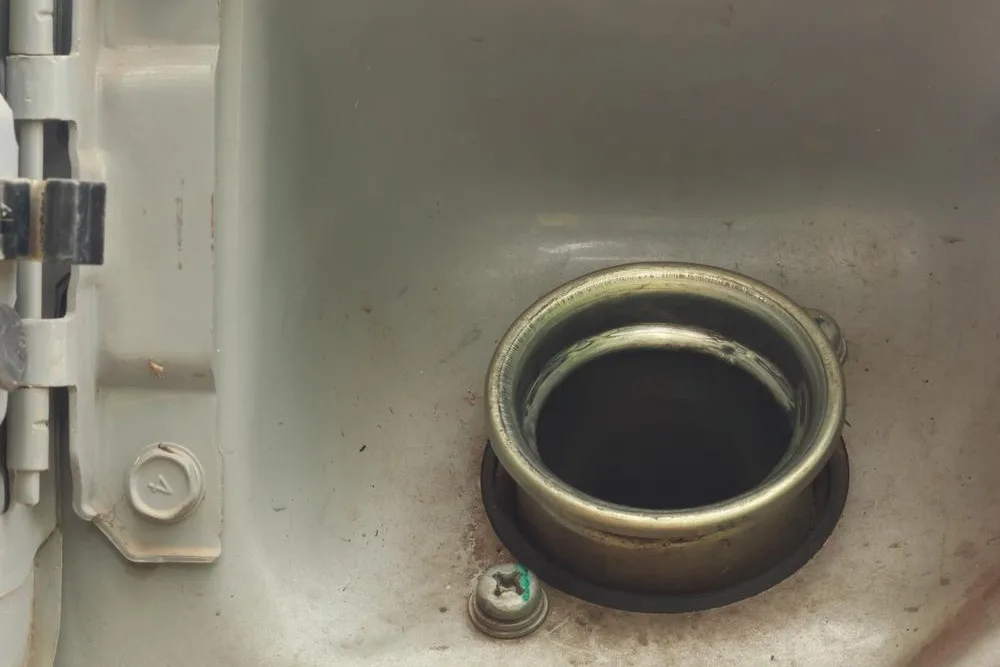
When I noticed the error, I started by checking the gas cap and the seals around it. I looked closely at the rubber O-ring to see if it was tight, undamaged, and in good condition. If you notice dirt, debris, or damage, clean the cap and seal with WD-40 or replace them if necessary.
Use a Smoke Machine
To find the hidden leak, I used a smoke machine and ran a smoke test through the EVAP system. The smoke helps identify tiny cracks, holes, or loose connections where vapors escape. It’s the most effective way to locate the exact location of the issue, especially when nothing is visibly wrong.
Inspect EVAP Hoses
I decided to inspect all EVAP hoses and visually check for any cracks, holes, or disconnected lines. Some hoses were clearly damaged, so I had to replace them. This simple check can prevent deeper problems and is often the key to solving small leaks.
Examine the Fuel Tank
I also took time to examine the fuel tank for damage and leaks. I looked for signs like wet spots or the smell of fuel, which could point to a cracked area that might leak fuel vapor. If you find anything suspicious, it’s necessary to repair or replace it immediately—leaks here can cause fire risks.
Check the Leak Detection Pump
I decided to check the leak detection pump in the EVAP system to see if it was working properly. If the pump is defective, it may incorrectly detect leaks, leading to false warnings. To accurately detect problems, it’s necessary to replace the pump if it isn’t performing well—always ensure its functioning as it should.
FAQ
- How do you fix the P0442 code?
Tighten or replace the gas cap, inspect EVAP hoses and valves, or perform a smoke test to find and repair leaks. - Is it OK to drive with P0442 code?
Yes, but it’s best to fix it soon to avoid emissions issues and potential environmental harm. - How to fix a small EVAP leak?
Check and replace the gas cap, inspect hoses for cracks, and use a smoke machine to detect hidden leaks. - What is the most common cause of a small EVAP leak?
A loose, cracked, or damaged gas cap.

Mian Hashir is a passionate automotive enthusiast and the lead author at Car Garagee, a website dedicated to providing in-depth car reviews, maintenance tips, and the latest news in the automotive world. With years of experience in the industry, Hashir combines his technical knowledge with a love for cars to deliver insightful and engaging content. Whether you’re a car owner or a curious reader, Mian Hashir’s articles help readers make informed decisions, from choosing the right vehicle to understanding how to keep it in top condition.

